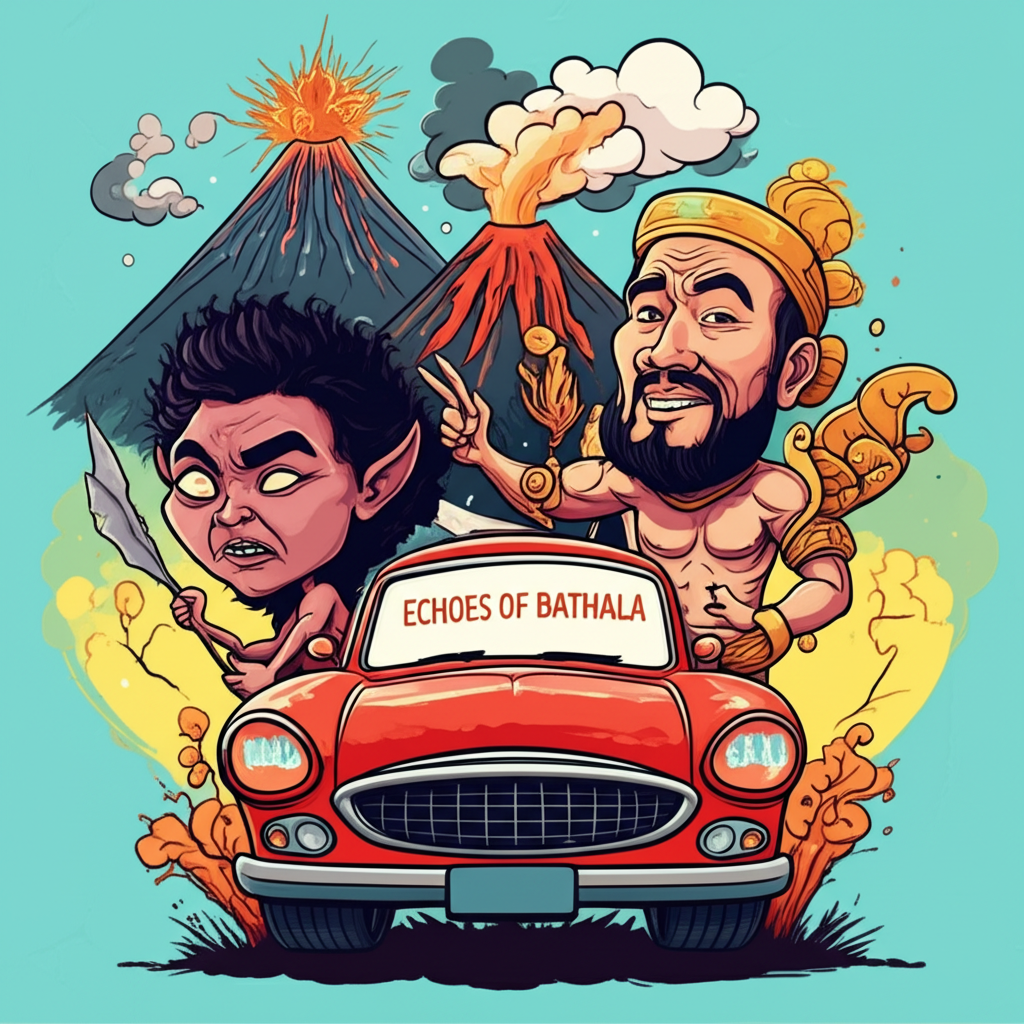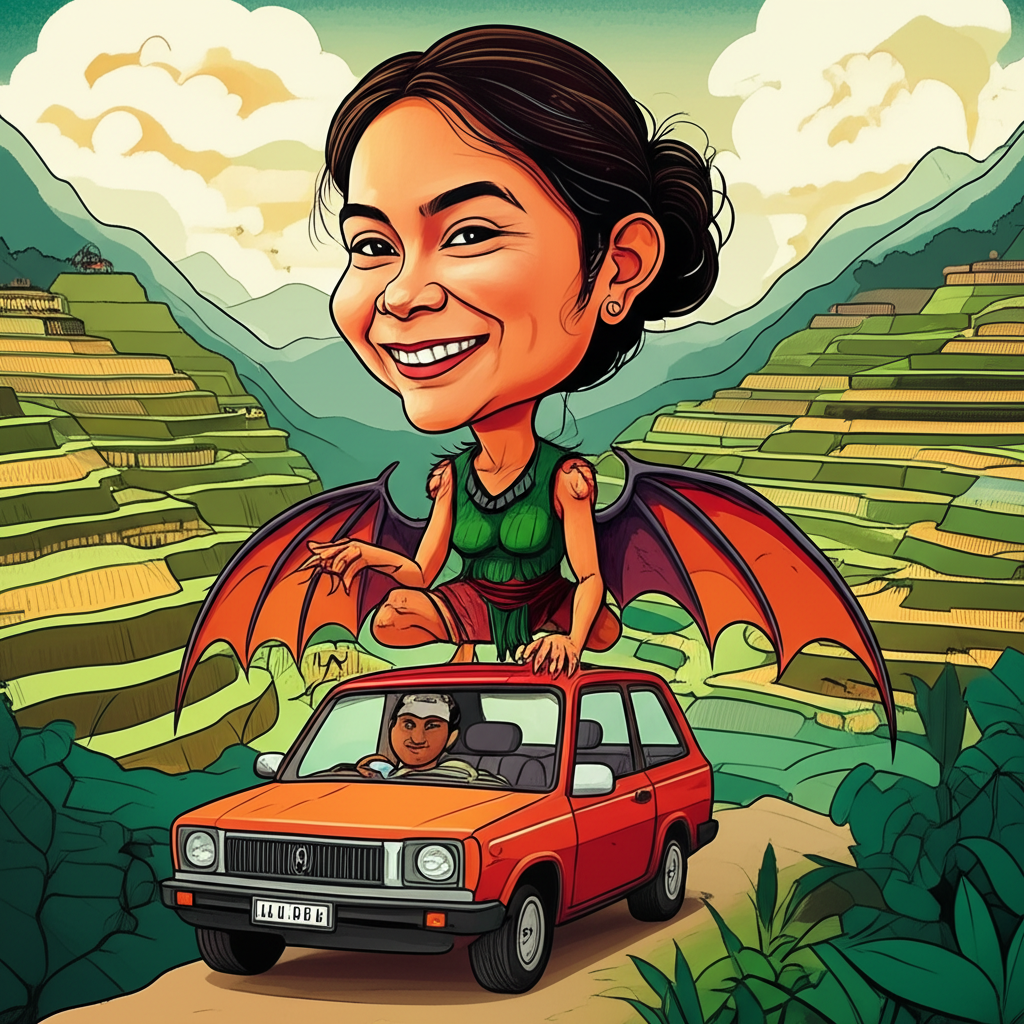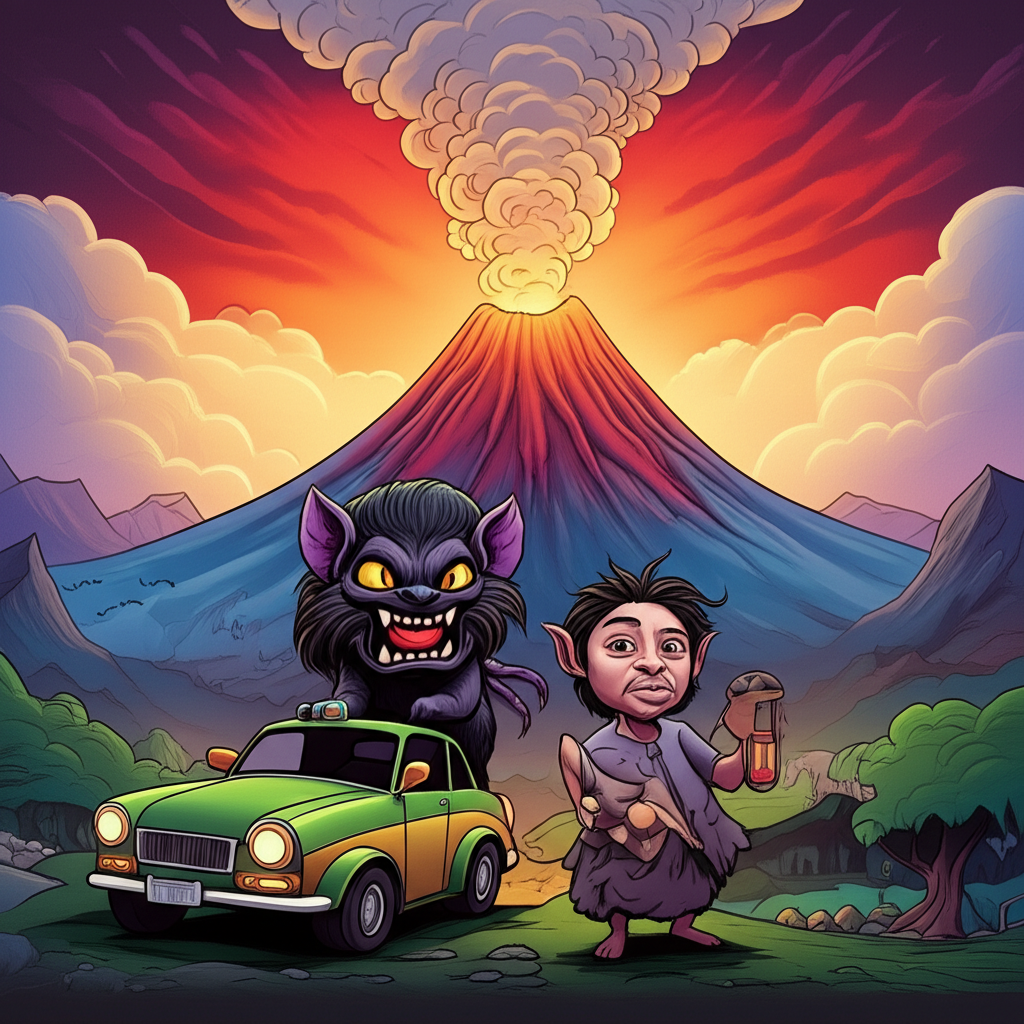
In the emerald embrace of the Philippine archipelago, where ancient forests whisper secrets and the ocean breathes tales, a rich tapestry of folklore has been woven over millennia. Among these enduring narratives, one that speaks to the deep reverence and primal fears of the islands’ ancestors is the legend of the Aswang, intertwined with the awe-inspiring majesty of Mayon Volcano. These are not pronouncements of divine power, but rather the imaginative stories passed down by ancient peoples, reflecting their worldview and their profound connection to the natural world.
The roots of these tales reach back to a time when the world was perceived through the lens of animism and a deep respect for the potent forces of nature. Before the advent of modern science, before the rigid lines of organized religion were firmly drawn, the early inhabitants of the Philippines lived in intimate communion with their surroundings. They saw spirits residing in towering trees, in the rushing rivers, and in the very earth beneath their feet. The sky was the domain of benevolent deities, and the unseen realms were populated by beings that embodied both the wonders and the terrors of existence. In this worldview, the Aswang emerged as a figure that embodied the darker, more unsettling aspects of the unknown, while Mayon Volcano stood as a monumental testament to the raw, untamed power that shaped their lives.
The Aswang, in the lore of the Philippines, is not a singular entity but a broad category of supernatural beings, often shapeshifters and nocturnal predators. They are depicted as creatures that can transform into various forms, from monstrous beasts to familiar animals, allowing them to move undetected among human settlements. Their defining characteristic, often described with a chilling vividness, is their insatiable hunger for human flesh and blood, particularly that of fetuses and children. Their symbolic attributes are multifaceted: they represent the primal fear of the unknown, the lurking dangers that stalk the night, and perhaps, the societal anxieties surrounding illness, death, and the vulnerability of the young. They are the embodiment of the shadows that lengthen with the setting sun, a stark contrast to the life-giving warmth of the day.
The narrative that weaves the Aswang and Mayon Volcano together often speaks of a primordial connection, a deep-seated relationship between these powerful forces. Ancient storytellers would recount how, in ages past, when the land was still young and the gods walked more openly among mortals, there existed a time of immense creation and destruction. Mayon, the "perfect cone," was not always a dormant giant. Its fiery eruptions were seen as the breath of a powerful spirit, a being that commanded the very essence of the earth.
One prevalent tale describes a formidable Aswang, perhaps a matriarch of its kind, who held sway over the surrounding lands. This Aswang, renowned for its terrifying power and its ability to sow fear, was said to have a particular affinity for the mountain. Some legends posit that the Aswang itself was born from the very earth that Mayon now presides over, a creature of shadow and primal instinct that thrived in the raw, untamed wilderness. Others whisper that the Aswang sought refuge in the shadow of the volcano, its lair hidden within the treacherous slopes or in caves formed by ancient lava flows.
The narrative would often unfold with the Aswang venturing out under the cloak of darkness, its supernatural senses guiding it towards unsuspecting villages. The fear it instilled was palpable, a primal dread that would grip the hearts of the people. They would light bonfires, hang garlic and other protective charms, and whisper prayers for safety, their eyes constantly darting towards the dark silhouette of Mayon against the starlit sky. The volcano, in its silent grandeur, became a backdrop to their fear, a constant reminder of the immense, often destructive, forces that governed their world.
Sometimes, the stories would connect the Aswang’s activities to the volcano’s temper. A particularly voracious Aswang might be said to stir the mountain’s slumber, its malevolent presence somehow influencing the fiery heart within. Conversely, when Mayon erupted, spewing ash and lava, it was sometimes interpreted as the mountain’s own fury, a celestial wrath that might, in turn, drive away the earthly darkness of the Aswang. These were not tales of direct control, but rather of a symbiotic, albeit terrifying, relationship between the elemental power of the earth and the monstrous forces that lurked within its embrace. The Aswang was a manifestation of the anxieties that arose from the unpredictable power of Mayon, a personification of the dangers that lay just beyond the flickering lamplight of their homes.
The symbolism embedded within these ancient tales is rich and varied. Mayon Volcano, with its near-perfect conical shape, often represented the divine feminine principle, a mother earth figure capable of both nurturing life with its fertile soil and destroying it with its fiery wrath. It was a symbol of creation and destruction, of the cyclical nature of existence. The Aswang, on the other hand, embodied the primal fears of mortality, the vulnerability of the human body, and the ever-present threat of the unknown. It served as a cautionary figure, a reminder of the need for vigilance, community, and perhaps, a moral order to ward off the encroaching darkness. The stories could also be interpreted as a way for ancient people to explain and cope with natural phenomena they did not understand – the unpredictable eruptions of the volcano and the inexplicable disappearances or deaths within their communities.
In the modern era, these ancient myths continue to resonate, finding new life in various forms of media and academic discourse. The Aswang has become a popular figure in Filipino literature, cinema, and video games, often reimagined as a terrifying antagonist or a complex, even tragic, character. Mayon Volcano, while still revered for its natural beauty, is also imbued with the lingering echoes of these legends, its majestic presence often serving as a dramatic backdrop in fictional narratives. Cultural studies scholars delve into these stories to understand the historical context, the societal anxieties, and the philosophical underpinnings of the ancient Filipino worldview. These interpretations, however, are purely academic and artistic; they acknowledge the imaginative power of these tales without validating them as literal truths.
In conclusion, the legend of the Aswang and its connection to Mayon Volcano stands as a testament to the enduring power of human storytelling and the deep-seated need to make sense of the world around us. These are cultural narratives, born from the imagination of ancient peoples, reflecting their understanding of nature’s might and the mysteries of existence. As Muslims, we recognize that the true Creator and Sustainer of all is Allah (SWT), the Omnipotent and Omniscient. These stories, while fascinating in their cultural and historical context, do not alter this fundamental truth. They serve as a reminder of our shared human heritage, the boundless capacity for imagination, and the vibrant tradition of storytelling that connects us across generations, offering insights into the minds and hearts of those who came before us.





